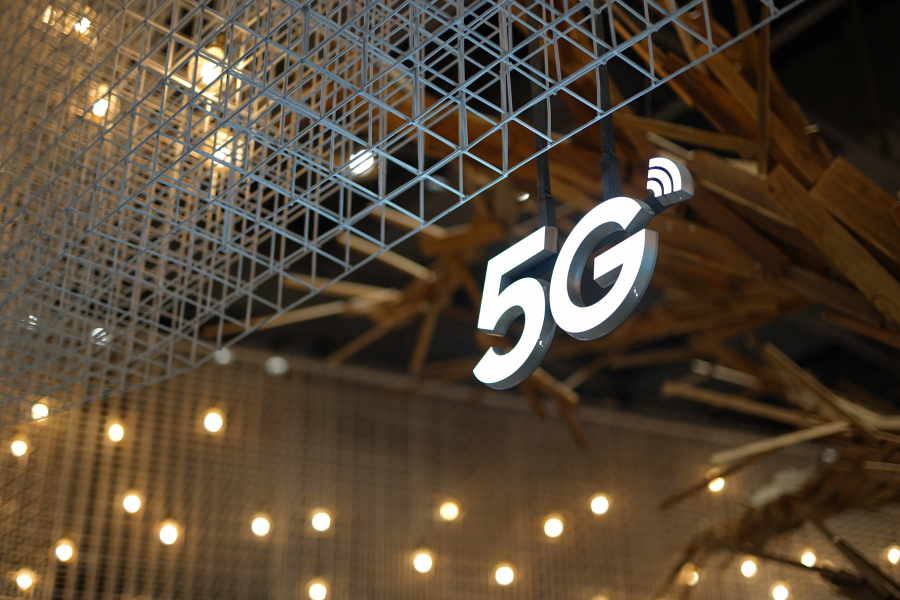HOT OFFER! Save $180 on selected internet plans + get beIN SPORTS CONNECT included!...Use promo code BEIN30 at checkout! Hurry, limited time only!
If you’re tired of dropped calls and weak signals, you’re probably ecstatic about 5G. This new mobile network technology is designed to provide faster internet speeds, lower latency and greater capacity than all its predecessors. To fully maximise 5G, it’s important to understand the key factors that affect its signal strength.
In this article, we’ll delve into the secrets on getting the best 5G signal so you can say goodbye to poor connectivity for good!
What is 5G?
5G, the 5th generation of mobile network technology, uses higher frequency radio waves to transmit data. We’re talking tons of data over much shorter distances than 4G LTE. It’s designed to connect just about everyone and everything together, effectively improving user experiences while opening up new possibilities for a wide range of industries and use cases.
Is it poised to replace 4G LTE anytime soon? Let’s find out.
Quick review: 3G and 4G networks
3G technology made way for other practical uses of the mobile phone, from streaming videos to downloading music. With faster connection speeds, 4G LTE expanded these capabilities, enabling HD mobile TV, video conferencing and more.
Is the hype around 5G justified?
The ‘hype’ around 5G comes from the numerous benefits it offers. By providing high bandwidth and low latency, it can potentially enable advanced technologies and services that weren’t possible with previous generations of networks (think autonomous cars, remote surgery and the Internet of Things).
While 5G is expected to create new business opportunities and therefore drive economic growth, let’s step back a bit and focus on something more urgent and mainstream—mobile phones and signals.
What causes a weak 5G mobile signal?
The smartphone has established itself as the primary access point not only for mobile communication but also for other everyday uses. Mobile carriers are in a constant battle to deliver consistent service, but somehow, connections still falter and it can be really annoying for users. What are the common causes of weak mobile signals?
- Distance from the nearest mobile tower
The farther you are from a mobile tower, the weaker your signal will be.
- Obstacles blocking the signal
Buildings, trees and other obstacles can block or weaken the mobile signal.
- Network congestion
If there are a lot of people in one area using the same network, the signal may get weaker due to the increased demand on the network’s resources.
- Outdated or damaged phone
A weak signal can also be caused by a phone that is outdated or has been damaged, which can affect its ability to connect to the network.
- Network maintenance or upgrades
Sometimes, mobile network providers will conduct maintenance or upgrades on their networks, which can temporarily cause a weaker signal.
How does 5G work?
5G networks use a variety of technologies to ensure fast and stable mobile signals for consumers. Some of these key technologies include:
1. Millimetre waves (mmWave)
5G networks use millimetre wave (mmWave) spectrum to provide higher data rates. These waves have a much shorter wavelength than traditional radio waves, allowing them to carry more data. The downside is that mmWaves have a short range, and are more susceptible to obstacles, which can limit their coverage.
2. Beamforming
5G networks use beamforming to direct the transmission of data at specific devices rather than broadcasting it in all directions. Think of how a flashlight illuminates a large area while a laser pointer focuses on a single spot. In mobile signals, this translates to enhanced network efficiency and reduced interference for massive MIMO.
3. Massive MIMO
MIMO (multiple input, multiple output) is a modern antenna system that has been used in mobile communications for many years now, and it gets a big push with 5G’s massive MIMO. With 4G LTE, MIMO technology uses multiple antennas at the base station and the device to simultaneously transmit and receive data. Both the base station and device antennas have various smaller antennas called antenna elements.
Massive MIMO does the same but with a lot more antenna elements. This allows 5G networks to support a large number of devices and more demanding applications. Furthermore, massive MIMO has the capacity to support multiple mobile phone users simultaneously.
4. Small cells
5G networks use a big number of small cells, which are low-power wireless access points that provide coverage in a specific area with high data capacity requirements. Examples include buildings, stadiums, train stations and dense urban areas.
5. Network slicing
Network slicing allows the creation of multiple virtual networks within a common physical network. Each ‘slice’ of the network can be dedicated to specific applications, use cases or customers. This allows different types of devices and services to be supported on the same network while still providing the necessary resources and quality of service.
6. Software Defined Networking (SDN) and Network Function Virtualisation (NFV)
5G networks use SDN and NFV to create a more flexible and efficient network. SDN separates the control plane and data plane, which allows for more dynamic and efficient management of the network.
On the other hand, NFV allows for the virtualisation of network functions, which can be deployed on a common hardware infrastructure, making the network more efficient and cost-effective.
7. Low-band, mid-band and high-band spectrum
5G networks use different frequency bands to provide different types of services. Low-band spectrum is good for covering large areas with a single cell, while high-band spectrum is perfect for providing high-speed data to a smaller area. Lastly, mid-band spectrum provides a balance between coverage and capacity.
All these technologies are designed to work together to provide a fast, stable signal with high capacity, low latency and improved coverage, in order to support a wide range of applications and devices, from smartphones to self-driving cars.

How can I get the best 5G signal?
1. Check for network coverage
Before you buy a new phone, check the coverage map of your network provider in the area you will be using the device. This will give you an idea of the 5G signal strength in your area.
2. Position your device near a window
5G signals can travel through windows, so positioning your device near a window can help to improve the signal.
3. Keep your device updated
Make sure your device’s software and firmware are up-to-date, as this can help to improve the signal.
4. Remove any obstructions
Get rid of physical obstructions that may be blocking the 5G signal, such as furniture or other electronic devices.
5. Check the frequency band
5G networks operate on different frequency bands, such as sub-6GHz and mmWave bands. The latter is able to provide higher data rate but with a short range and high susceptibility to obstacles. If possible, use a device that supports both bands, as it will increase the chances of finding a stronger signal.
6. Contact your network provider
If you’re still experiencing poor signal, contact your network provider and ask for help. They can check the network status and help you find a better solution.
Is 5G replacing 4G LTE?
Currently, 5G is being deployed alongside 4G as an additional option for users and won’t be replacing it any time soon. The two technologies will continue to coexist in the foreseeable future, and it will probably take time for 5G to fully replace 4G. It will all depend on the availability of 5G networks, the cost of 5G devices and plans and user preferences.

Full adoption of 5G is going to take time, especially in suburban and rural areas.
Get 5G with MATE!
Already have 5G coverage in your area and a 5G compatible device ready to go? Then make the switch to a MATE 5G plan!
Our 5G plans are below:
Great Mates 32GB 5G
- 32GB of mobile data per month
- 500GB of banked data
- Unlimited talk & text to standard Aussie numbers
- Unlimited international phone calls & SMS to selected 15 countries
Best Mates 50GB 5G
- 50GB of mobile data per month
- 500GB of banked data
- Unlimited talk & text to standard Aussie numbers
- Unlimited international phone calls & SMS to selected 15 countries
Brilliant Mates 65GB 5G
- 65GB of mobile data per month
- 1000GB of banked data
- Unlimited talk & text to standard Aussie numbers
- Unlimited international phone calls & SMS to selected 15 countries
Soul Mates 150GB 5G
- 150GB of mobile data per month
- 1000GB of banked data
- Unlimited talk & text to standard Aussie numbers
- Unlimited international phone calls & SMS to selected 15 countries
All on the 5G network!
For more information about 5G, you can visit our dedicated 5G mobile page.


